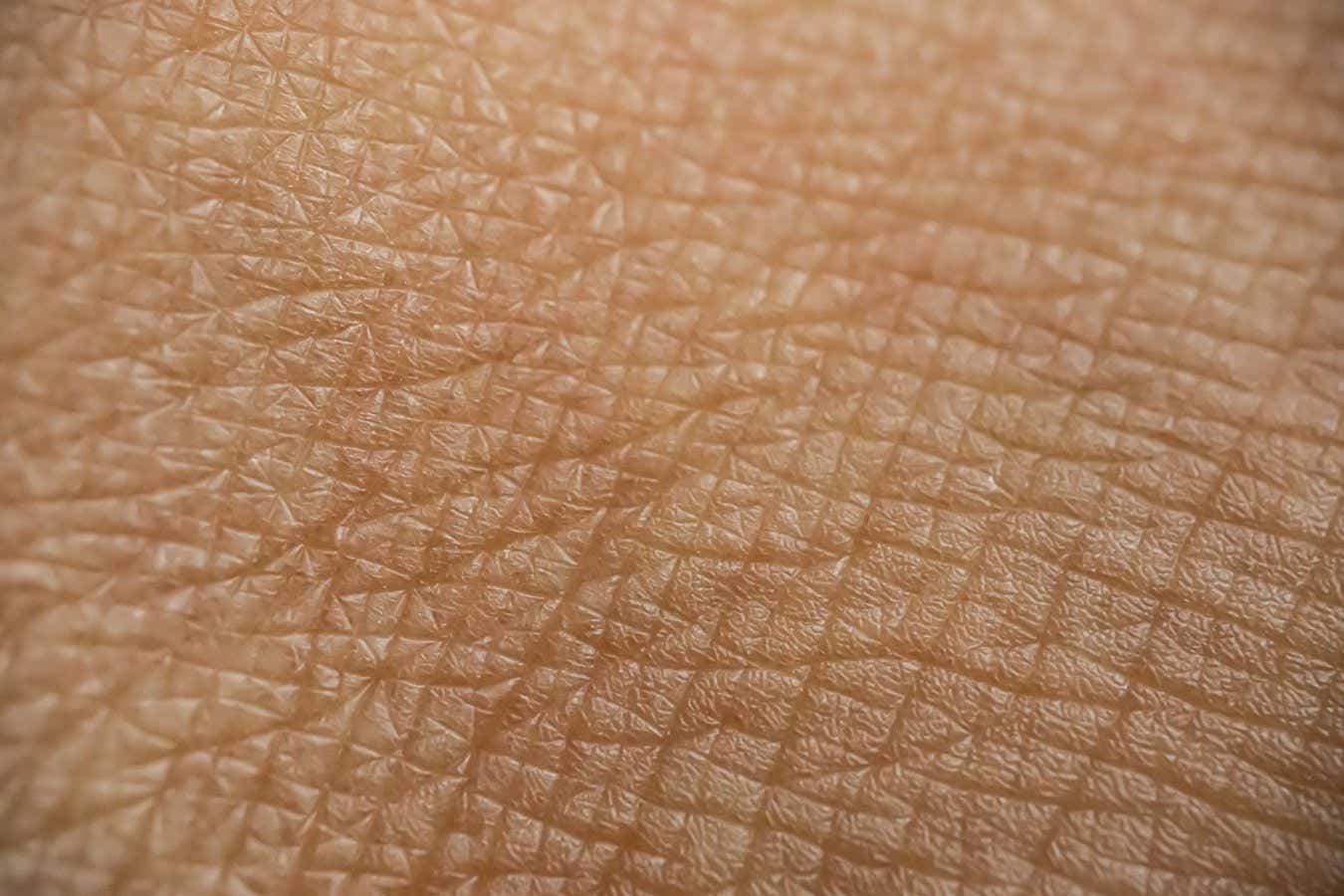
Our skin can be made more permeable with a little stretching
MASTER/Getty Images
Vaccines could one day be administered topically, with no needles required, by stretching the skin beforehand.
Our skin is an essential barrier against pathogens, and is also tied to our immune system in other ways – gentle scratching, for example, seems to activate receptors that boost immune defences.
To investigate whether stretching the skin prompts similar effects, Stuart Jones at King’s College London and his colleagues applied a suction device to mice and human skin samples for 20 minutes, increasing the skin tension to about 6 newtons. Normally, skin is under tension of about 1.5 newtons, says Jones. Applying lotion doubles it, and a broader massage takes it to 6 newtons or more.
By watching fluorescently labelled molecules under a microscope, the researchers found that such stretching rearranges skin’s collagen fibres and opens hair follicles, increasing its permeability so the molecules could pass through. After the tension was released, the skin stayed in this state for about 15 minutes.
The stretching also triggered stromal cells, which provide structural support to the skin, to react. “They produce a mild inflammatory response in the stretched area, and that stimulates an immune response,” says team member Elodie Segura at INSERM, the French National Institute of Health and Medical Research.
Tests in mice revealed that the stretching increased the number of immune cells in that part of the skin, and triggered changes in the activity of genes that encode immune signalling molecules called cytokines.
In another part of the experiment, the team compared the effects of injecting an H1N1 flu vaccine into mice against stretching their skin and then applying a lotion containing the same vaccine dose. “We were very surprised to see that the strength of the immune response was similar,” says Jones.
“It’s a really exciting idea that you could put a nanoparticle on the skin and then by stretching the skin, you’re able to get it in,” says Dan Kaplan at the University of Pittsburgh, Pennsylvania.
The researchers also found that the topical vaccine’s effect was strong with or without an adjuvant. These are molecules used in vaccines to stimulate the immune system, but some people are allergic to them. “In this case, the stretching is providing that trigger,” says Jones.
He envisages that people could self-administer topical vaccines at home by applying a small suction device to their skin beforehand. “There’s no blood. There’s no breaking of the skin. It’s not invasive,” he says.
Despite finding the study “very interesting”, Darcy Dunn-Lawless at the University of Oxford says questions remain. “What sort of depths could you reach with this sort of treatment? And how accurately are you going to be able to hit a certain target dose?”
More work is needed to see whether the approach works in people, who have a thicker outer layer of skin than mice, says Jones. But he adds that the permeability response in the first part of the experiment was similar between the two species.
“Although in mouse skin, the hair follicles are more numerous, the ones in humans are bigger,” says Jones. This means you get bigger gaps around the follicles to let molecules through. “We actually think it might work slightly better in humans.”
Topics:
Source link : https://www.newscientist.com/article/2496664-stretching-the-skin-could-enable-vaccines-to-be-given-without-a-needle/?utm_campaign=RSS%7CNSNS&utm_source=NSNS&utm_medium=RSS&utm_content=home
Author :
Publish date : 2025-09-17 16:00:00
Copyright for syndicated content belongs to the linked Source.